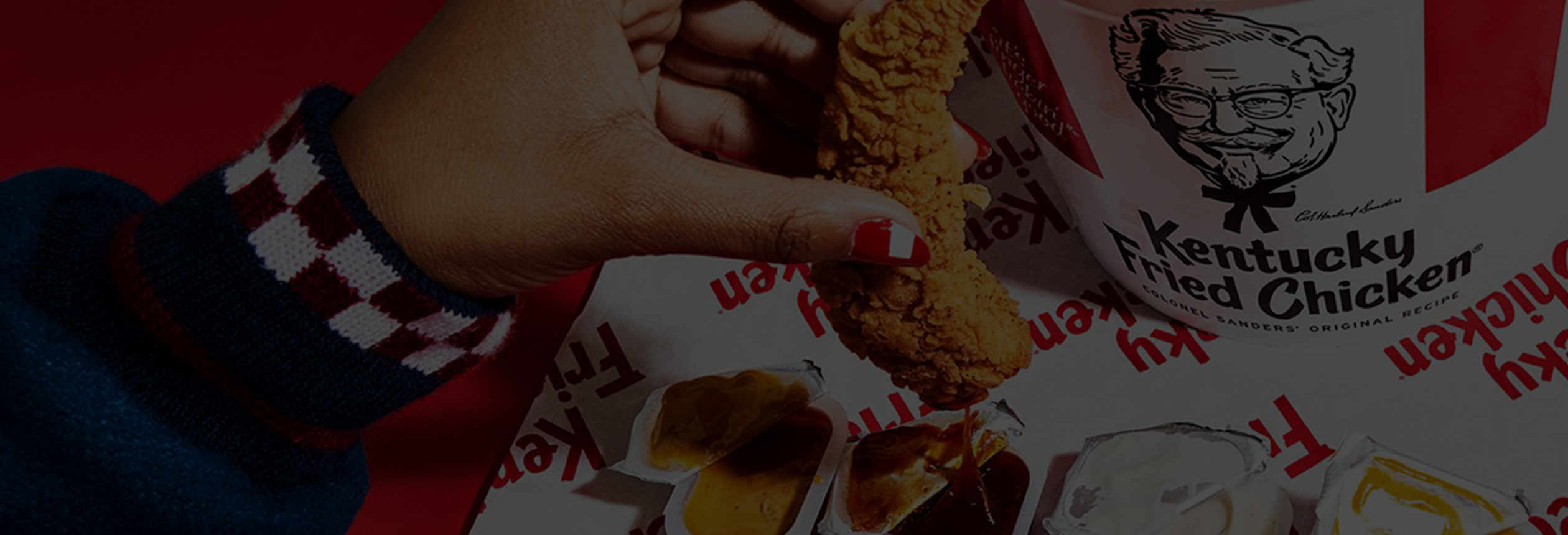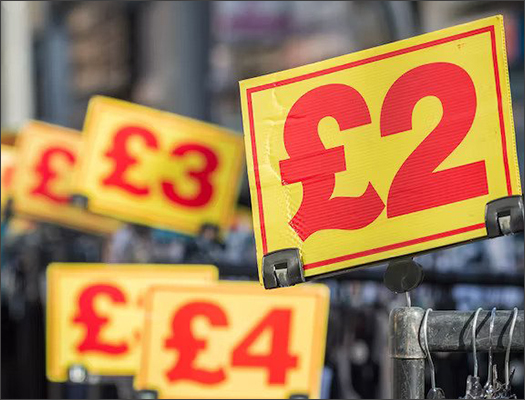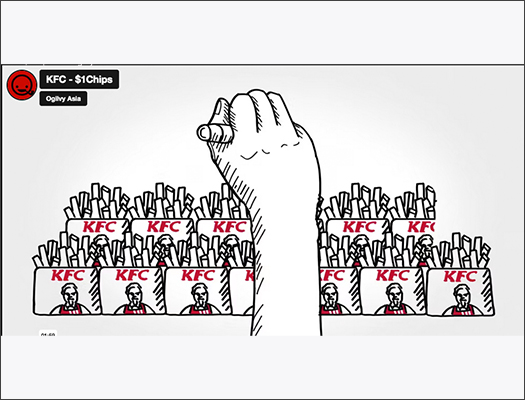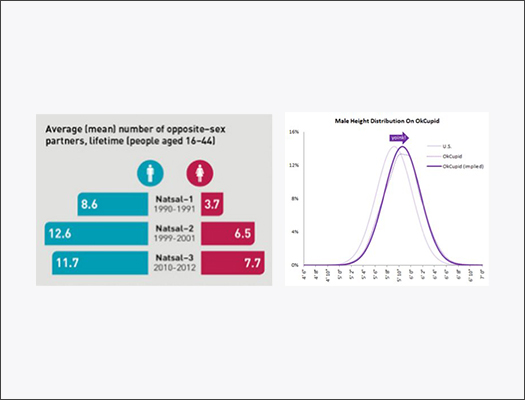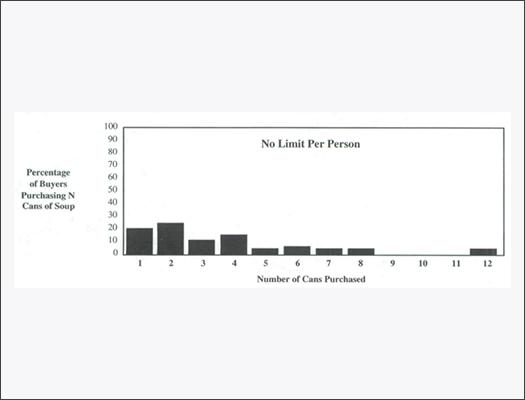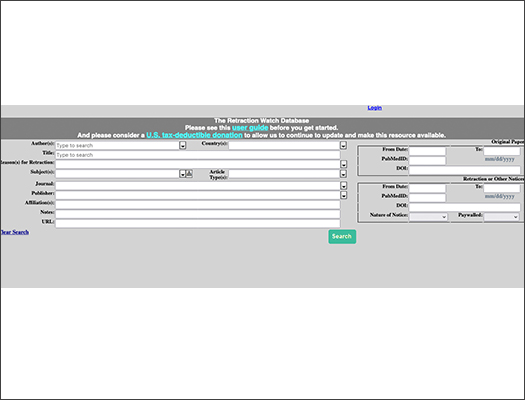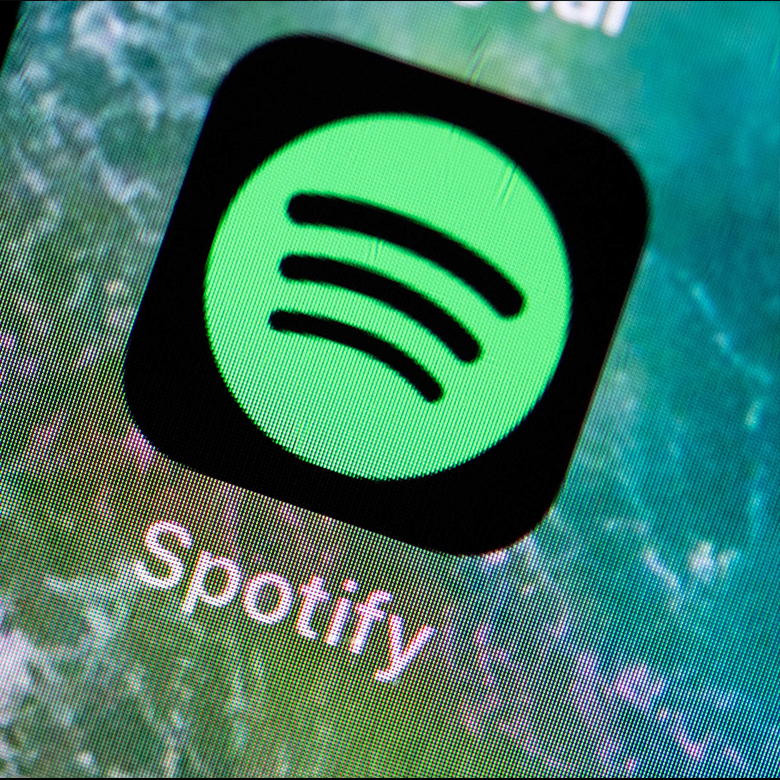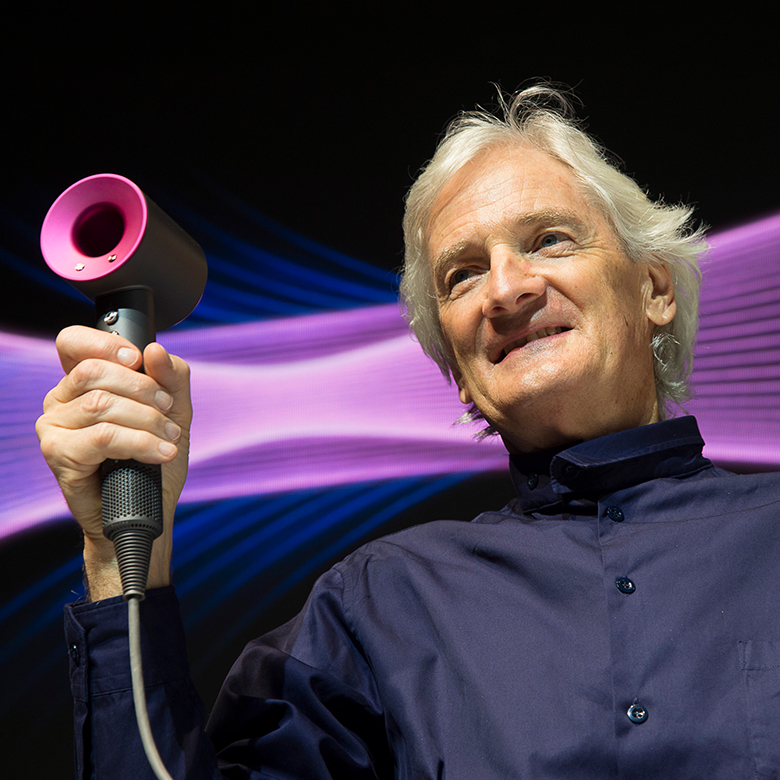Episode Transcript
- MichaelAaron: Welcome back everyone to Behavioral Science for Brands podcast, where we decode brands, apply proven behavioral science and bridge the gap between academic studies and practical marketing applications. I'm MichaelAaron Flicker.
- Richard: And I'm Richard Shotten.
- MichaelAaron: Today we're talking fried chicken, beer, and the consumer behavior lab's first national experiment. Let's get into it. So Richard KFC, Kentucky Fried Chicken is an American fast food restaurant chain, headquartered in Louisville, Kentucky, specializes in fried chicken. Have you ever had it? Oh yeah. Yeah. And growing up, had you seen KFC in Britain, your whole life.
- Richard: Yes. I can't remember it not being around.
- MichaelAaron: It's really an interesting history. I'll get into it in a little bit, but KFC, for those American listeners that we have, it was even bigger outside of the United States than it was in America. Oh, wow. I didn't know that. Yeah. Uh, in fact, today it's the world's second largest restaurant chain, measured by sales after McDonald's 22,000 global locations in 150 countries. These numbers are as of December 2019, uh, and it's really an interesting brand story. KFC was founded by Colonel Sanders. He lived between 1890 and 1980. He was an entrepreneur who began selling fried chicken from his roadside restaurant in Corbin, Kentucky during the Great Depression. Sanders was a very early restaurateur to identify the potential of franchising restaurants, and he franchises his first KFC, Kentucky Fried Chicken Restaurant in Utah in 1952. and KFC popularized chicken in the fast-food industry by challenging the dominance of the hamburger, which had really reined in the first half of the 20th century as the predominant food for, quick service or fast food restaurants.
- MichaelAaron: And KFC was really one of the first American fast food chains to expand internationally. It opened originally in Canada, the United Kingdom, where Richard's from Mexico and Jamaica, all by the mid 1960s. And in 1987, it became the first Western restaurant chain to open in China. It's expanded so rapidly in China today, it's the company's largest single market.
- MichaelAaron: So, while KFC is an American owned and operated brand, a lot of the innovation has come from their growth outside of the United States and from having a culture that values testing and learning, and a lot of that testing and learning has been based on behavioral science. Richard, when we looked at kfc, I think we're a little surprised at how much behavioral science was really going on here.
- Richard: Yeah, they, they, they're a fascinating case study, I think, for using behavioral science principles as stimulus that you then go and test in market. Probably the best examples from 2014 in Australia, and they have a long-standing promotion in Australia where they sell french fries or chips as they call them for $1. This has been going on for, for years. In 2014 generate 90 different ideas based on 18 different behavioral science principles, different messages trying to boost sales. They whittle those ideas down into the best five. They then take those five and run them on Facebook, and they monitor the click through rates to see which they think might be the most successful.
- Richard: They then take that winning idea, run it in store, and they see a significant uplift in sales to the order of 56%. Wow. Now the idea they use. Is taking one of the statements that was previously in the disclaimer and putting it front and center of the advertising. When you say the disclaimer, we mean at the very bottom in the small amount, the terms of conditions?
- Richard: Yeah, the stuff that they, people try and write in tiny fonts and no one ever reads it. Yes. They took one of the points from there, which was maximum number of bags of chips you can buy is four. And they put that right in the, uh, headline copy. This is an idea called false scarcity. It's essentially the idea that if a brand runs a promotion and they don't let you take as much as you want, the body language of that is that it must be so good that either the brand worry they're going to sell out and not be able to satisfy all the customers.
- Richard: Or it must be such good promotion that it's actually hurting their margins. It's a, it's a loss leader. So when they run that line, maximum four bags per person, they see a 56%. Sales growth versus the campaign they'd run the previous year.
- MichaelAaron: That's some pretty unbelievable results. And I think if you just take a step back, we're going to dive deeper into this, the number of behavioral science biases that they started with and how they whittled it down. I mean, this is really a model of what, you know, we would love to see more marketers here in America do.
- Richard: Yes. What they did was whittle their five candidate ideas down, not by asking people, which they thought was the most powerful, they instead ran them and judged a, you know, a clicks overreach was, I think the metric they used, and there is a real benefit of prioritizing actual behavior over claims. Behavioral scientists are deeply skeptical of what people say they motivates them. There's a argument that people don't necessarily know what motivates them. So, if you put them on the spot and question them, like most marketers do, people will give you lots of explanations to their behavior. But because they don't have that full introspective insight, many of those explanations are frankly false,
- MichaelAaron: You know, and a, a phrase that I've heard, I don't know who to attribute it to, is that people buy emotionally and then justify their actions after rationally. So, they're more emotional in their decision making. And then if you ask them why they did it, they'll give you a rational reason.
- Richard: Yeah. There's a lovely David Ogilvy version of that statement where he says, consumers don't think how they feel, say what they think or do what they say. The point being is if you base your activity on a customer claim, that is a dubious foundation for marketing.
- MichaelAaron: So, Richard, why do you think the idea of false scarcity would work like this? Is there any academic research that might support this claim?
- Richard: Yeah, it's a reasonably well studied idea and certainly got. a bit of heritage. There's a study by Wansink and Kent, uh, back in 1998 that proves this power of putting caps on purchasing.
- Richard: So, they work with a supermarket chain in Sioux City, Iowa, so loads of different supermarkets. They run a promotion in all those supermarkets, so it's for Campbell Soup, and in every supermarket, the price was reduced from 89 cents to 79 cents in a third of those supermarkets. That's the only thing that ran.
- Richard: And people on average buy 3.3 cans of soup. Next set of supermarkets, it's the same discount, but they put a little label on the shelf saying maximum cans you can buy is four. Got it. And they see an increase in purchase rates. Now it's 3.5 cans on average, and then the final group of supermarkets same discount.
- Richard: But now the label on the shelf says maximum number of cans, you can buy is 12. And there you see a average purchase weight of seven cans. What Wansink and his colleagues argue is firstly by limiting the amount that consumers buy, it makes it more appealing. You know, people cannot possibly remember what a [fair price for a can of soup is.
- Richard: Soup is one of the thousand different products in a medium sized supermarket, so what they tend to react to is not the absolute price. But the relativity, well, not just relativity more, I, I would call it the body language, the, the way that the price is framed. And this limitation insinuates the, it's such a good deal.
- Richard: It's hurting the supermarkets giveaway at this price, so that makes the same price much, much more appealing. So really simple thing you can do as a brand is when you are launching products, even if you have a phenomenal volume in stock. Limit what people can take back. You'll make the same product that much more appealing.
- MichaelAaron: So why do you think that limit of four was less effective than limit of 12? What do you think? The psychology?
- Richard: Yeah. So that's a good, that's a good point. Uh, they talk about that in the paper and they argue that it's essentially anchoring. Mm-hmm. You throw out a number and even if people know that number is irrelevant, it affects their behavior.
- Richard: So, if you say to people, maximum you can buy is 12, no one wants 12 cans of tin tomato soup, right? But they take that number as the starting place and then they adjust down, And the repeated finding from studies is they don't adjust far enough. So if they start 12, they're just down think, well, twelve's far too many.
- Richard: I don't want 8, I don't want, 9, I don't want 10. Oh yeah, seven sounds reasonable. If you set that starting place at four, they're just down. But from a, a lower starting place. So, so I think you're right that think. The scale of the cap. Yep. And often throwing out a very large number use anchoring to a greater degree.
- MichaelAaron: When we work with clients, Richard, we often use anchor pricing as a technique to make products more, uh, exciting to consumers at different price points. Uh, a famous example is when Apple launched the Apple Watch, they launched three different versions of the watch, all with very minute differences between them, but the pricing is what set them apart.
- MichaelAaron: The base. $399, the mid watch, $499, and then the expensive watch using a Hermès band, $1,350, something like that. Maybe it was $1,450 point is it set an anchor that made the $499 middle watch much more exciting to people.
- Richard: Yeah, I think that approach of launching three different products is a fascinating one. You know, your basic, your middle, and your premium psychologists call this extremeness aversion and say that people try and avoid the cheapest and the most expensive and they gravitate towards the middle.
- Richard: Because I think what you do is if you just have a 399 and a four nine watch, it feels a bit propagate to buy the 499. You feel like you're spending a hundred dollars more than you need to. You, I. 1350 and suddenly you are reframing 4 99. Not as being wasteful, but Well, you're, by buying the 499, you can give yourself an alibi.
- Richard: You are saving what my master's right. Going to do. It's 800, $900. That's right. So it's a really simple technique. The key thing though is to make sure you don't judge the success of that. Super high price products based on quantity of sales. Exactly. Right. Because it is there, it's quantum sales plus, um, that lift.
- MichaelAaron: yeah, exactly. That's right. Yeah. Yeah. The, uh, great American philosopher, uh, Homer Simpson. Homer Simpson, uh, would famously say, I'll have the second cheapest bottle of wine. Right. It's the same concept on the other side. If I go to a restaurant and I don't know what the quality of the wines are, I don't want the cheapest, but give me the second cheapest, it'll make me feel like I'm, I'm anchored in a different way.
- Richard: Menu design is fascinating, and I've done some work with fast food restaurants and one of the tricks of a good menu is you put on a super-premium burger or Chateaubriand or lobster, obviously Chateaubriand or lobster, not on fast food restaurants, but you know, get the principle. The purpose is not for people to actually buy that necessarily, but it makes all the other items just look that bit better value.
- MichaelAaron: Fascinating. So, let's head to a break and when we come back we'll share the Consumer Behavior Lab's first nationwide study of Americans and their perceptions of false scarcity. Behavioral Science for brands is brought to you today by Method1, a digital first marketing company that brings science to the art of persuasion. They're behavior change experts who solve business challenges by creating meaningful connections with consumers. Method1 has deep disciplines across many brand categories to unlock behavior change that fuels brand growth. Visit them at method1.com. And we're back. Before we went into the break, Richard, you and I were having a, a, a great discussion about false scarcity specifically. How KFC did this in Australia, but it was occurring to me, you know, a, this is a fast-food restaurant B, this is Australia, not America. Uh, and when you and I were thinking about this, we said, it's all well and good, but how do we know that this is extensible for multiple categories here and now in 2023?
- MichaelAaron: So, we commissioned a nationwide study to go and ask a question of how do Americans react to the concept of false scarcity?
- Richard: Yeah. That's right. And I would have this as a general principle. If you hear about, uh, an academic study or an experiment done in a different market, you don't have to take those results on faith alone.
- Richard: If you know the methodology, you can essentially rerun those studies in your market for your category. Yep. So, we picked the beer category. We recruited 282 nationally, representative Americans split them into two groups, and that's key. Split them into two groups. Half of them were told you can buy 12 Sierra Nevada pale ales for $18 99.
- Richard: And then they were asked how good value they thought it was, and 14% of those people thought. That was good or great value. Second half of the participants gave them essentially the same story, $18 99 for 12 bottles. But this time we said the maximum you can take home is four cases. The proportion of people who thought it was good or great value goes up to 22%.
- Richard: So that is a 59% improvement. Wow. In evaluation. Wow. Exactly the same deal. We're just adding on. This qualifier of you are not allowed to take as much as you want. And just as with Wansink 's experiment, just as with the KFC example, in Australia, we see the same finding. It becomes more appealing. People react to the body language promotion, not just the economic facts.
- MichaelAaron: Yeah. So we see it in. Canned goods in a grocery store. We see it in a add-on item at a fast food restaurant, and we see it in the retail environment buying alcoholic beverage, at a retail store. Yes. Yeah, exactly. Exactly. A lot more confidence that using this body language will lead to the results you hope for.
- MichaelAaron: Exactly. So, Richard, when you were presenting the research study and the way we designed it, you said something really important, that it was very significant, that we separated into two distinct groups. Can you talk about that?
- Richard: psychologists or researchers would call this approach monadic testing or monadic split cell testing. And what you do is you get two different groups. You give them the same scenario, but there is one difference in that scenario. So, in our group A. They just hear about the $18 99 price. Group B also hear there's a limitation on how much they can buy. When we then question those groups as to the appeal levels, any difference in the scores, we can attribute back to that single change variable.
- Richard: That is a much more accurate way of flushing out people's motivations because it's oblique. What most advertisers do is say to people, here are two offers. Which would you prefer? Now, if we had done that, people would've laughed at us. They would've said, well, you know, it's exactly the same. It's exactly the same value.
- Richard: This extra requirement, this extra limitation, wouldn't affect me. Because what happens if people compare things side to side? They flip into an ultra-rational considered. Mode of decision making. However, in reality, when they're in a supermarket, they are reacting on the spur of the moment to these much more subtle ways of framing the price. So, if you use this randomized group approach, monadic testing, you get much closer to the truth. Prioritize that over direct questioning.
- MichaelAaron: You know, hearing you explain this to me really speaks to the Gestalt of America right now. The moment that we're in that folks don't trust polling in politics, research in brand testing as much as they did in previous decades.
- MichaelAaron: And so, there's almost a movement that we see among brand marketers among agencies to deprioritize research as much as they have valued it in the past because they don't believe you can get the answer of who's going to be the next president. And what I think we're talking about is research still has a lot of value. It's the way you do the research.
- Richard: Oh, absolutely. I think people are right to have a skepticism, but if that, trickles over into cynicism and then you have a problem. If people think, well, some research is flawed, therefore my response is going to be to ignore all research. I think that's the wrong implication.
- Richard: Yeah. What you want to do, like in all walks of life, is not reject research. But put a great reemphasis on higher quality research, setting up these test and control conditions, using monadic testing, using real life field experiments like Wansink did in the supermarket. That's a much better guide to behavior. So prioritize those approaches rather than walking away from research altogether.
- MichaelAaron: And it really allows you to follow what I believe many of us feel is a best practice. Being consumer centric in the way that we design our marketing, being consumer first in the way we design our advertising.
- Richard: Yeah.
- Richard: Consumer centricity is an admirable gain, unfortunately sometimes how brands interpret that is to ask consumers right, what they want, right? So, I would say yes, you need to put the consumers at the heart of your marketing, but the way to do that is, not to trust them in their direct statements. It's ins. It's instead to use things like monadic testing. You want to put their unspoken motivations at the heart of your design, your marketing, your branding.
- MichaelAaron: So Richard, we never want to end a podcast without wrapping up and giving, uh, listeners the key things they should take away from this episode.
- Richard: Key thing is have a greater skepticism towards claim data, but don't replace that with no research at all. Instead, get to those more genuine motivations by using the same techniques that behavioral scientists would do. So, we've talked a lot about the power of monadic testing. That is something you as a brand can easily apply in your research.
- MichaelAaron: and is it one of America's great debates? I'm not sure, but how about grilled chicken or fried chicken? Richard, what type of guy are you and what do you put on your chicken sandwich?
- Richard: I am getting to the age now where I cannot eat what I want without putting on weight, so I would definitely be grilled chicken and jalapenos as a the topping you,
- MichaelAaron: I would say, uh, fried chicken would be my preference. Yeah. With uh, ketchup, pickles, and maybe a little lettuce and tomato.
- Richard: Ketchup. Not brown sauce.
- MichaelAaron: Not, we don't have brown sauce.
- Richard: Brown sauce. Ah, it's like ketchup, but brown. Is it really? Yeah, it is. Hp. HP. Sauce. , you're missing out in life. . I've never heard of it before.
- MichaelAaron: Uh, it tastes like ketchup.
- Richard: It does. It's a bit like spicier. Not hot spice, but it has a mix of spices in it. Oh, we all learn something new. I'll bring a bottle next time I come over.
- MichaelAaron: Thanks for tuning in today to the Behavioral Science for Brands podcast. If you'd enjoyed our show, please give us a good rating, drop a review, and if you are trying to implement behavioral science for your brand, drop us a comment. Let us know or email us at hello@theconsumerbehavioral lab.com. I'm Michael Aaron Flicker.
- Richard: And I'm Richard Shotten.
Episode Highlights
False Scarcity
The rarer or more difficult it is to obtain a product, the more valuable it becomes. Because we think the product will soon be unavailable to us, we're more likely to buy it than if there were no impression of scarcity.
CBL's First Nationwide Study
KFC tested the theory of false scarcity in Australia in 2014, so we commissioned a nationwide study on how Americans react to the concept of false scarcity in the beer category.
Monadic Testing
A type of survey research that introduces survey respondents to individual concepts in isolation.
Resources & Useful Links
Want to dig deeper on the idea of social proof and the intention of actions gap? Here are some
additional resources that show how to make your brand more popular with consumers and the
importance of combining motivation with triggers to convert intention into action.
